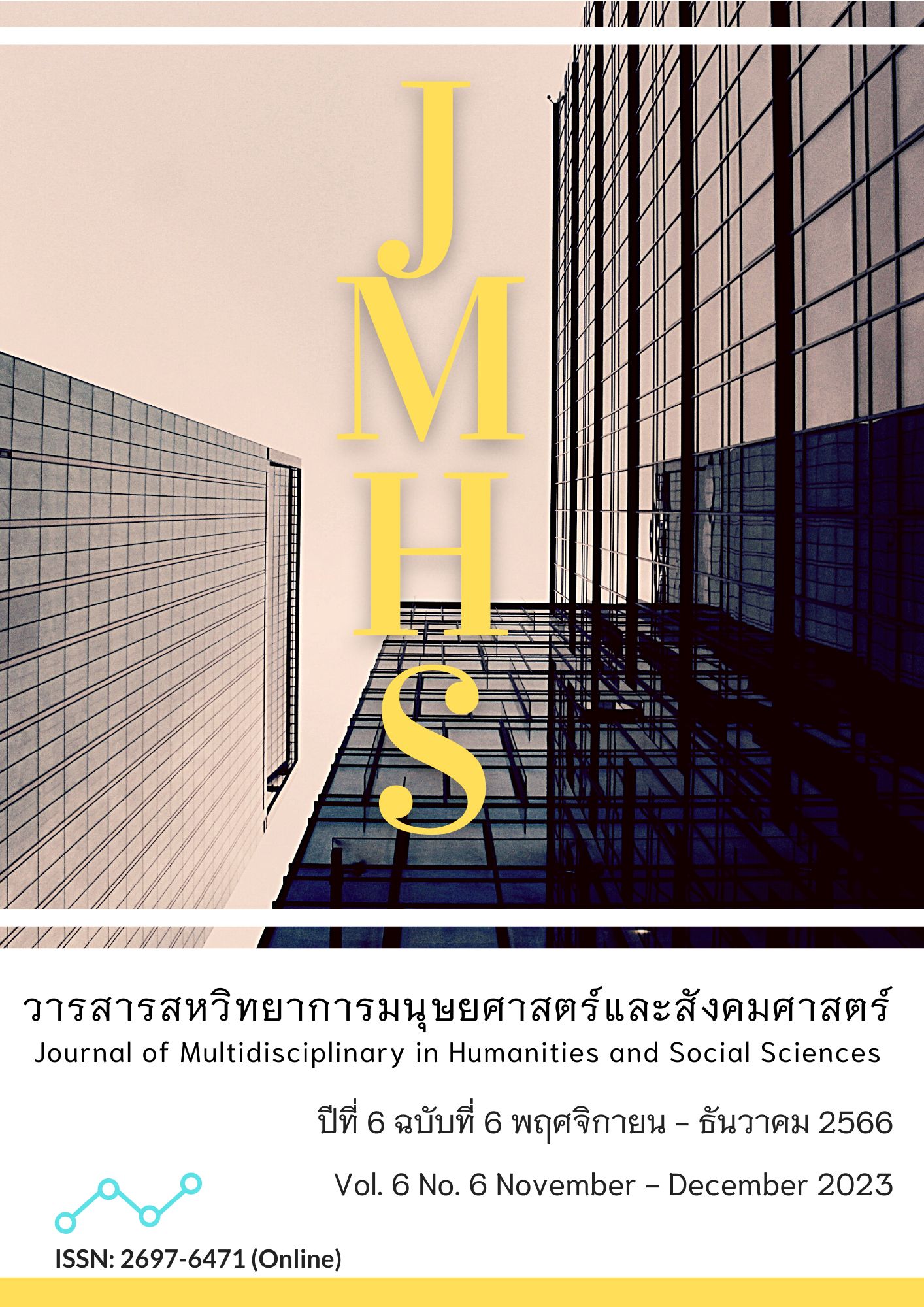Ethnosemantic Study of Thai Herbal Liquor Names
Main Article Content
Abstract
This article aimed to study the meaning of Thai herbal liquor and the concepts of Thai people reflected in naming Thai herbal liquor. This qualitative research employed an ethnosemantic study as the framework. The participants in the research were a total of 15 producers and sellers of Thai herbal liquor from different areas. The research tool was an interview, and the data analysis and findings were descriptively written.
The results indicated that the names and meanings of Thai herbal liquor could be classified into three groups. 44 names of Thai herbal liquor in the first group were named according to their properties. 21 names and 19 names of Thai herbal liquor in the second group were named according to their intentional uses: to nourish the body and treat diseases, respectively. The 12 names of Thai herbal liquor in the last group were named according to the main ingredients. In addition, naming Thai herbal liquor reflected the concepts of Thai people, which were the attitudes towards sexuality in Thai society, the way of naming Thai herbal liquor with the use of euphemism, and the consumption of Thai herbal liquor by Thai males and females who had different personal uses of the liquor.
Article Details

This work is licensed under a Creative Commons Attribution-NonCommercial-NoDerivatives 4.0 International License.
Views and opinions appearing in the Journal it is the responsibility of the author of the article, and does not constitute the view and responsibility of the editorial team.
References
กฤติกา ชูผล. (2554). ชื่อเรือประมงในจังหวัดสมทุรสงคราม : การศึกษาตามแนวอรรถศาสตร์ชาติพันธุ์(วิทยานิพนธ์ปริญญาอักษรศาตรมหาบัณฑิต). มหาวิทยาลัยศิลปากร.
แก้วใจ จันทร์เจริญ. (2532). คำรื่นหูในภาษาไทย(วิทยานิพนธ์ปริญญาอักษรศาสตรมหาบัณฑิต). จุฬาลงกรณ์มหาวิทยาลัย.
โกสินทร์ ปัญญาอธิสิน. (2552). คําเรียกการทําอาหารในภาษาไทยถิ่นเหนือตามแนวอรรถศาสตร์ชาติพันธุ์(วิทยานิพนธ์ปริญญาอักษรศาตรมหาบัณฑิต). จุฬาลงกรณ์มหาวิทยาลัย.
คณะกรรมการประมวลเอกสารและจดหมายเหตุ จัดพิมพ์เนื่องในโอกาสพระราชพิธีมหามงคลเฉลิมพระชนมพรรษา 6 รอบ. (2542). แพทยศาสตร์สงเคราะห์.
ชลิดาภรณ์ ส่งสัมพันธ์. (2551). ประวัติศาสตร์ของเพศวิถี : ประวัติศาสตร์เรื่องเพศ/เรื่องเพศในประวัติศาสตร์ไทย. กรุงเทพฯ: มูลนิธิสร้างความเข้าใจเรื่องสุขภาพผู้หญิง และสถาบันวิจัยประชากรและสังคม มหาวิทยาลัยมหิดล.
ปานทิพย์ มหาไตรภพ. (2545). นามสกุลพระราชทานในพระบาทสมเด็จพระมงกุฎเกล้าเจ้าอยู่หัว : การวิเคราะห์ทางอรรถศาสตร์ชาติพันธุ์(วิทยานิพนธ์ปริญญาอักษรศาตรดุษฎีบัณฑิต). จุฬาลงกรณ์มหาวิทยาลัย.
ปิยลักษณ์ อุปนิสาการ. (2549). การศึกษาชื่อท่ามวยไทยตามแนวอรรถศาสตร์ชาติพันธุ์(วิทยานิพนธ์ปริญญาอักษรศาตรมหาบัณฑิต). จุฬาลงกรณ์มหาวิทยาลัย.
พิจิตรา พาณิชย์กุล. (2547). การศึกษาชื่อและระบบการทอซิ่นมัดหมี่ดั้งเดิมของคนไทพวน อำเภอบ้านหมี่ จังหวัดลพบุรี ตามแนวอรรถศาสตร์ชาติพันธุ์(วิทยานิพนธ์ปริญญาอักษรศาตรมหาบัณฑิต). จุฬาลงกรณ์มหาวิทยาลัย.
สำนักภูมิปัญญาคุ้มครองการแพทย์แผนไทย กรมการแพทย์แผนไทยและการแพทย์ทางเลือก กระทรวงสาธารณสุข. (2555). คัมภีร์ธาตุพระนารายณ์. กรุงเทพฯ: โรงพิมพ์องค์การสงเคราะห์ทหารผ่านศึก.
อมรา บาลยอ. (2546). ยาดองเหล้าในมิติทางการแพทย์และสังคมวัฒนธรรม(วิทยานิพนธ์ปริญญาศิลปศาสตรมหาบัณฑิต). มหาวิทยาลัยมหิดล.
อมรา ประสิทธิ์รัฐสินธุ์ (2549). กว่าจะเป็นนักภาษาศาสตร์. กรุงเทพฯ: จุฬาลงกรณ์มหาวิทยาลัย.
อัญชลี สิงห์น้อย. (2552). รายงานวิจัยเรื่องคำเรียกรสของกลุ่มชาติพันธุ์ไทในเขตภาคเหนือตอนล่าง : กรณีศึกษาในแนวอรรถศาสตร์ชาติพันธุ์. พิษณุโลก: คณะมนุษยศาสตร์, มหาวิทยาลัยนเรศวร.
อุปกิตศิลปสาร, พระยา. (2499). หลักภาษาไทย อักขระวิธี วจีวิภาค วากยสัมพันธ์ ฉันทลักษณ์. (พิมพ์ครั้งที่ 6). พระนคร: ไทยวัฒนาพานิช.
Frake, C. O. (1961). The Diagnosis of Disease Among the Subanam of Mindanao. American Anthropologist. In Dell Hymes (ed.). Language in Culture and Society. (pp. 113-132). Harper and Row.
Frake, C. O. (1980). Language and Cultural Description: Essays. Stanford: Stanford University.
Stren, G. (1968). Meaning and Change of Meaning. London: Indiana University.


